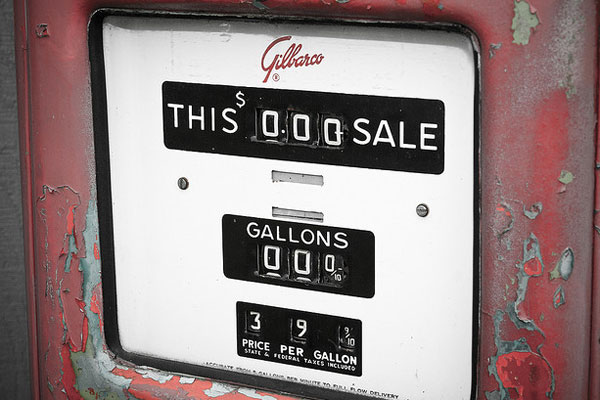
Today’s big business story is the price of gas, which has gone up considerably in the past couple weeks, affecting drivers, grocery shoppers, restaurant owners, and people who take pictures of hot dog stands. The Tribune editorial page urges calm, running quickly through the list of reasons prices might be going up and basically concluding that we should let the invisible hand of the market massage our aching backs. But when it comes to the oil market, it’s less an invisible hand than, like, an opaque, multi-tentacled beast–somewhere between Cthulhu and a jellyfish.
Which is why not everyone is so relaxed; it’s hard to be when speculators are out in force. Bets that oil prices will rise to $150 and even $200 have spiked. The Department of Energy cites Libya and other Middle Eastern unrest as a cause for rising prices.
Which might make you wonder if your gas comes from Libya; the answer is that it probably doesn’t, especially in America, although it can come from lots of places. In his extraordinary Tribune piece "A Tank of Gas, a World of Trouble," Paul Salopek traced the ingredients of a single tank of gas to the Gulf of Mexico, Texas, Louisiana, the Illinois basin, Saudi Arabia, the Congo, and Nigeria. Libya doesn’t account for much American oil, or world oil generally, but the concern is that unrest in smaller oil producers suggest potential unrest throughout the region. Yemen, for instance, is a mess, and fellow Saudi neighbor Oman is tense. In Kuwait they’re handing out watermelons, and you know what that means (if you know a lot more about Kuwait than I do).
So what could go wrong in Saudi Arabia? Well, there’s this:
More than 17,000 Saudis have signed up on a Facebook page calling for a "Day of Rage" on Friday, according to Barclays Capital. That’s despite King Abdulla’s recent announcement of a $36 billion program for employment, housing and education.
Yes, investment banks are citing Facebook pages as reasons to be wary about oil prices. (In one of the great moments in cultural slippage, the March 11 "Day of Rage" in Saudi Arabia may owe its name to the Weathermen via a PBS documentary.)
So the markets are uneasy. And that’s the rub with speculation. If Saudi Arabia melts down, buying futures at $150 a barrel–$3 higher than the 2008 record–might seem reasonable and not the irrational result of a Glenn Beckian fever dream.
(And many, many more things effect gas prices. If you really want to get deep in the weeds and/or are curious about how we in Chicago get our gas, check out this lengthy post at the Oil Drum about Canadian pipelines and Midwestern refinery capacity.)
But then again, there’s considerable evidence that the record 2008 oil-price spike was largely the result of speculators driving big institutional money into the commodities market (this 60 Minutes piece is a good overview). So we don’t just have to worry about Saudi Facebook users, but investment bankers as well.
Well, just as Wall Street is trembling about the Middle East, a guy named Michael Dunn will soon be off the Commodities Futures Trading Commission. Who’s he? He’s the CFTC swing vote on position limits, which, as Chris Hayes explains in The Nation, basically caps how much speculators can speculate.
So to sum up, the gas in your car probably comes from rock fissures beneath several countries and a couple continents. Your gas prices, meanwhile, come from Facebook posts, Kuwaiti watermelons, Wall Street computer terminals, regional refinery capacity, and Michael Dunn, though not for long.
Photo: makdune (CC by 2.0)


